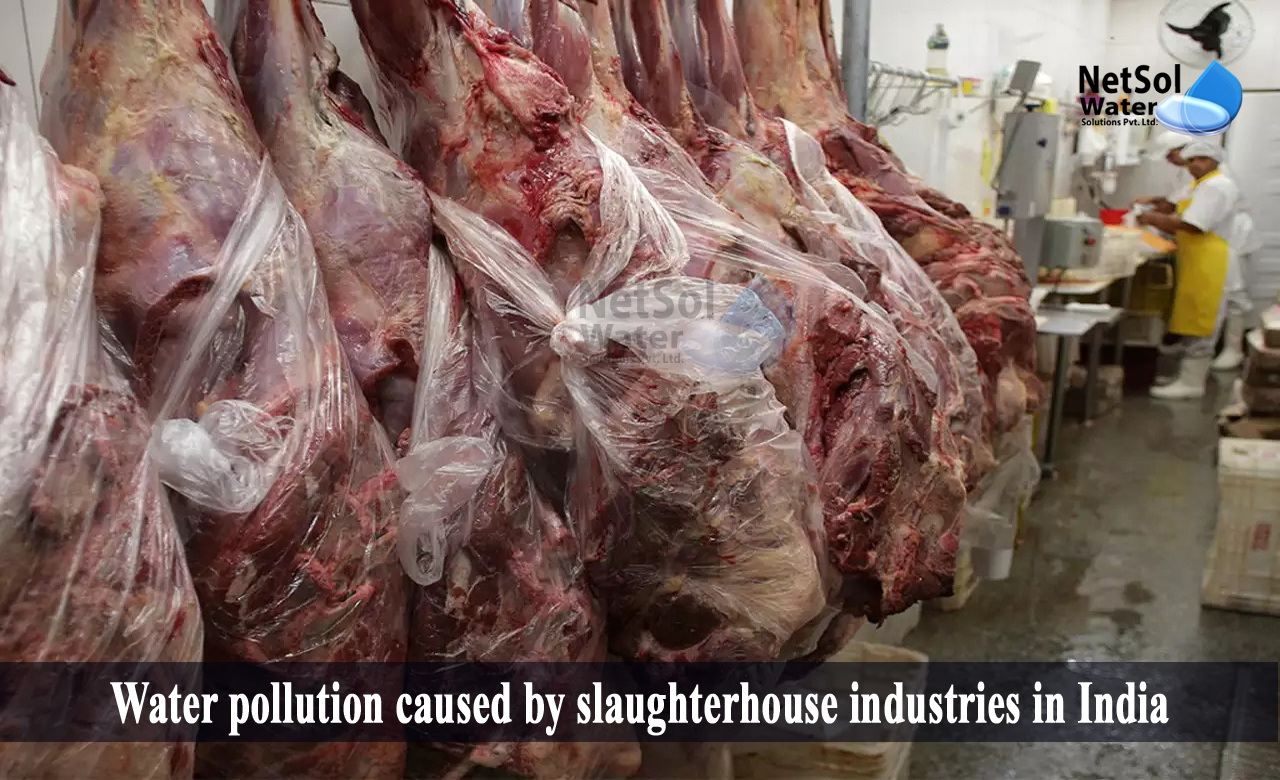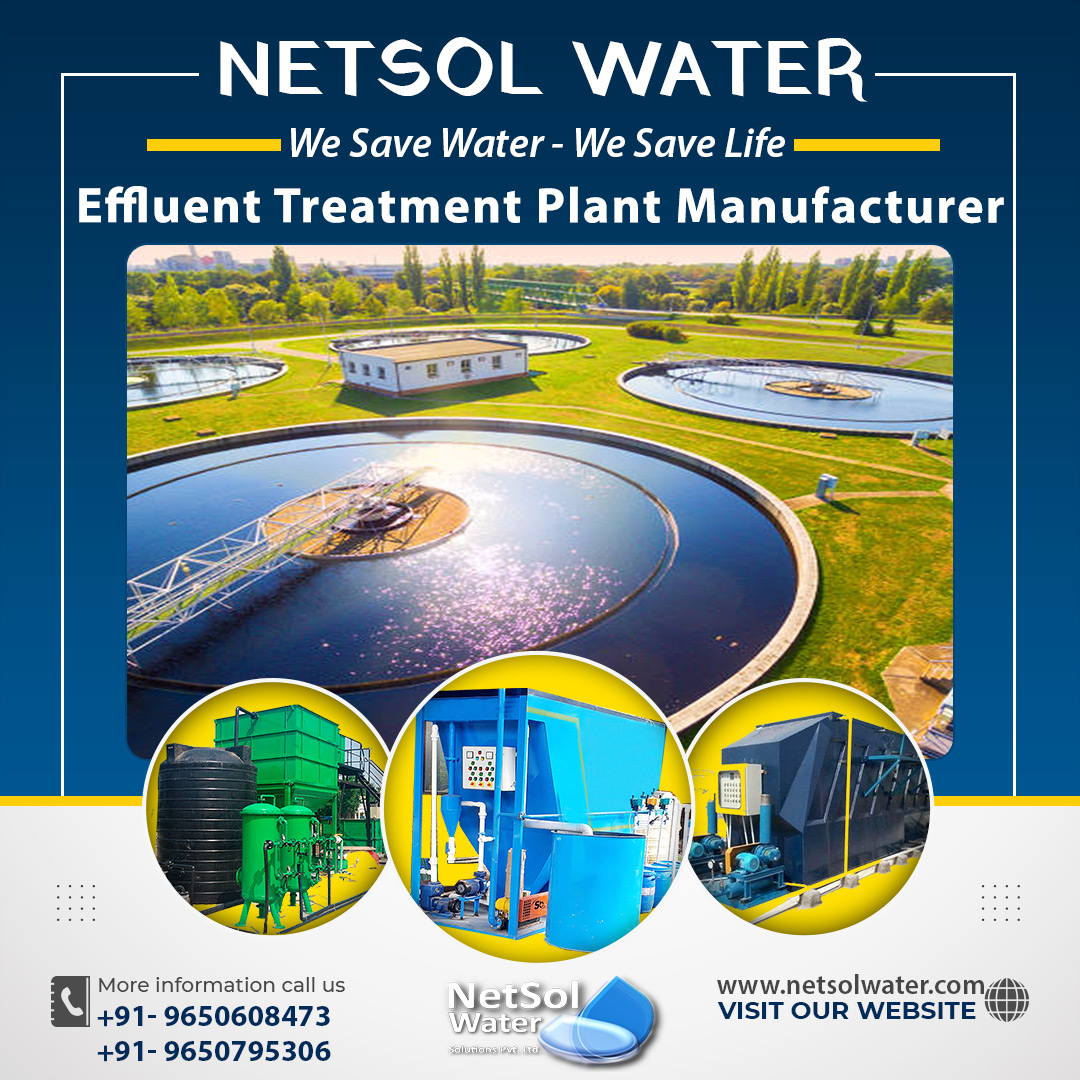The meat processing industry is one of the world's largest consumers of total freshwater, used in agriculture and livestock. Because, of the slaughtering process and facility cleaning, meat processing plants (MPPs) generate large amounts of slaughterhouse wastewater (SWW).
Due to the high content of organics and nutrients in SWWs, significant treatment is required for a sustainable and safe discharge to the environment. As a result, slaughterhouse wastewater treatment and disposal are a public health necessity.
Let’s see the effect of water pollution caused by slaughterhouses in India and their effective treatment.
How to Water pollution caused by slaughterhouse industries in India?
SWW has a high biochemical oxygen demand (BOD), a high chemical oxygen demand (COD), a high total organic carbon (TOC), high total nitrogen (TN), high total phosphorus (TP), and a high total suspended solids content (TSS).
Environmental and health consequences of slaughterhouse wastewater
· Environmental
The discharge of raw SWW into bodies of water has an impact on water quality, particularly by reducing dissolved oxygen (DO), which can lead to the death of aquatic life.
Furthermore, macronutrients like nitrogen and phosphorus can cause eutrophication. The discharge of these nutrients causes excessive algae growth and decay. As a result of the mineralization of algae, aquatic life may suffer due to a decrease in DO levels.
Finally, SWW may contain compounds that are directly toxic to aquatic life, such as chromium and unionized ammonia.
· Public Health
The general public health effects of the meat processing industry are related to direct interactions of human communities, with slaughterhouse activities as well as indirect interactions with the environment, which can previously be harmed by insufficient management of liquid effluents, solid waste, and obnoxious odours.
The presence of viruses, protozoa, helminthic eggs, and bacteria in SWW can cause serious gastrointestinal diseases, bloody diarrhoea, liver malfunctions, and, in some cases, death.
To avoid environmental pollution and adverse effects on human health, SWW must be treated efficiently before discharge into water bodies.
Methods for treating slaughterhouse wastewater
SWW treatment methods are comparable to municipal wastewater treatment methods, and include primary, secondary, and tertiary treatment. This, however, does not eliminate the need for primary care.
Following preliminary treatment, there are numerous SWW treatment methods that can be divided into four major categories: physicochemical treatment, biological treatment, AOPs, and combined processes.
A: Physiochemical Treatment
· Electrocoagulation
The electrocoagulation (EC) process has been used as a low-cost method for removing organics, heavy metals, and pathogens from slaughterhouse effluents, by inducing an electric current without the use of chemicals.
· Dissolved air flotation
The term "DAF technology" refers to the method of liquid-solid separation through the introduction of air. The fat and grease, as well as light solids, are pushed to the surface, forming a sludge blanket.
As a result, it can be continuously removed by scum scraping. Furthermore, flocculants and blood coagulants can be added to boost the DAF treatment's effectiveness, for COD and BOD removal by up to 75%.
· Membrane processes
Membrane processes are emerging as an alternative method of treating meat processing effluents. SWW treatment has used various membrane processes, including microfiltration (MF), ultrafiltration (UF), nanofiltration (NF), and reverse osmosis (RO), to remove particulates, colloids, macromolecules, organic matter, and pathogens, with overall efficiencies of up to 90%.
However, for nutrient removal in SWW, membrane processes must be combined with conventional processes.
B: Biological Treatment
· Anaerobic Treatment
It is the preferred method for slaughterhouse wastewater treatment because it is effective in treating highly concentrated industrial effluents, because anaerobic bacteria degrade organic compounds into CO2 and CH4 in the absence of oxygen.
Anaerobic baffled reactor (ABR), anaerobic digester (AD), anaerobic filter (AF), anaerobic lagoon (AL), septic tanks (ST), and up-flow anaerobic sludge blanket are examples, of typical anaerobic processes for the treatment of meat processing effluents.
· Aerobic treatment
After primary treatment, aerobic processes are frequently used for nutrient removal and further treatment. The required oxygen and treatment time are proportional to the strength of the SWW, making it ineffective as primary treatment but adequate after anaerobic treatment.
How can we assist?
Netsol Water has aided in the resolution of hundreds of water-related problems, by utilizing a wide range of specialized water treatment and wastewater treatment technologies, in slaughterhouse industries of India.




